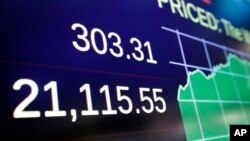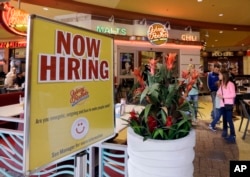It was another historic week for U.S. markets as the Dow Jones Industrial Average closed above 21,000 for the first time, taking only 24 trading sessions to rise from 20,000 to 21,000 — the second-fastest 1,000-point move ever by the index.
The S&P 500 closed higher for the week, completing a six-week win streak for the first time since late 2015.
Actually, this was the 14th time the S&P rose for six weeks consecutively since March 2009, according to analysts at LPL Financial.
Upward momentum
“Given the market’s strong performance since the election — and the tendency of markets to keep going in one direction [until they don’t] — I expect that the rally is likely to continue,” Commonwealth Financial Network's chief investment officer Brad McMillan said in a research report.
“In the short run, there’s no reason markets can’t keep going, and we should enjoy the ride. It may end up being even better than we now think. The faster and higher we go, however, the more damaging any pullback could be. Keep that in mind as you celebrate the new records,” he added.
Even though the major averages closed higher for the week, Thursday’s session saw some weakness.
“It looks like many investors took money off the table Thursday after Wednesday’s big rally,” J.J. Kinahan, TD Ameritrade's chief market strategist said. “That’s not too surprising, as profit taking often follows these sharp upward moves. Plenty of positive sentiment appears to remain in the markets, meaning we shouldn’t necessarily see Thursday’s sell-off as an indication of any fundamental change in market psychology.”
Week ahead seems quiet
Other than the key employment report for February next Friday, it will be a relatively quiet week. The employment data give the most comprehensive report of how many people are looking for jobs, how many have them, what they're getting paid and how many hours they are working. These numbers provide the best way to gauge the current state of the economy and its future direction.
The upcoming jobs report is especially notable because it is the last one the Federal Reserve will see into account before its Federal Open Market Committee meeting on March 14-15, when the central bank is all but certain to announce an interest-rate increase. A rate hike now appears to be viewed by many investors as a vote of confidence in the economy, as opposed to the past where it was seen as a potential market derailment.
The futures market now prices in a 82 percent chance of a March hike.
The overseas calendar is full of potentially market-moving events, including a European Union summit, a potential House of Lords vote in London on Brexit, the European Central Bank meeting and China's National People's Congress, where Premier Li Keqiang will provide government targets for the Chinese economy in 2017.










